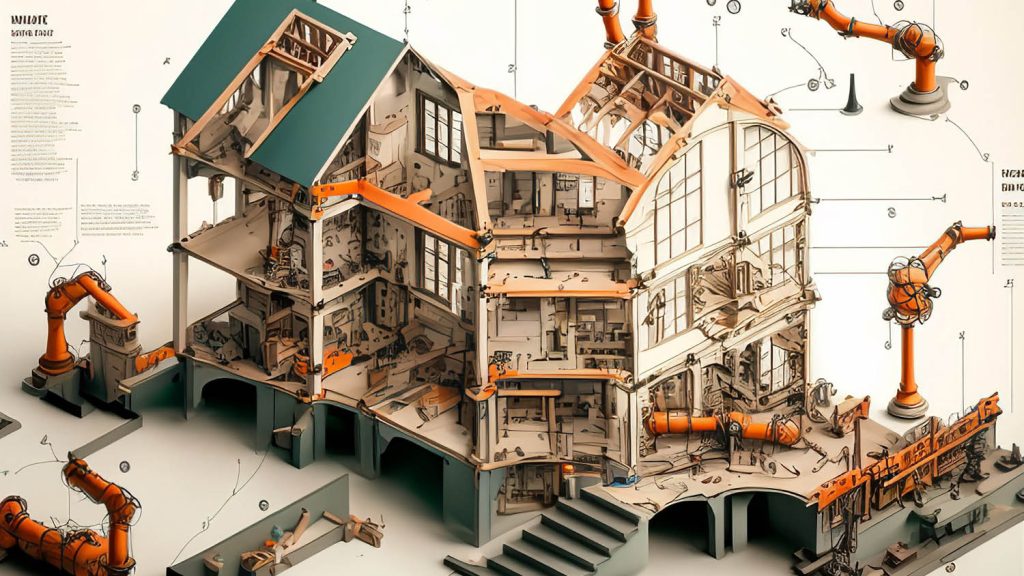Tal Friedman explores FIM and how a fabrication centric approach, one where the entire building process is considered holistically, could help impart real change in the construction industry
It is a common notion in the AEC industry that building is a linear process. It begins with conceptual design, moves into compliance, then analysis, and finally, fabrication. That process can take months, and sometimes years, every single time.
But FIM (Fabrication Integrated Modelling) offers to reverse the equation, allowing us to get fabrication right from the start. Looking at the construction software industry roadmap in past years, it is evident that the design/engineering process is perceived as a ‘solved’ issue by the mainstream CAD/BIM companies that dominate the market. In the eyes of executives at these companies, the next stop on the journey to conquering the entire construction value chain is project management and procurement.
In the age of FIM, the one who controls the initial design/ engineering process controls the rest of the value chain, too
But I would like to propose an alternative perspective. To my mind, procurement and project management are not a ‘continuation’ of the design process, but a derivative of it. Instead of running forward, perhaps we need to go back to basics, and think about the building process more holistically. In the age of FIM, the one who controls the initial design/ engineering process controls the rest of the value chain, too.
Though BIM’s original concept was to simplify the design process and cut resources, current methodologies demand special BIM managers and experts and more planning time and costs. It is no wonder, then, that only an estimated 20% of projects use even the basic capabilities of BIM. A much smaller fraction is actually implementing detailed, high-level modelling, as seen in BIM Level 3.
In today’s construction world, space layout planning is not enough. Design teams (architects, engineers, consultants) often reside in ‘masstopia’ or ‘renderland’, their thinking dominated by virtual environments and documents nested as far away from a real-life work site as possible. As a result of this fragmentation, the level of control that design teams exert on the fabrication supply chain is diminishing.
In an age where the biggest challenge the construction industry faces is adopting advanced industrialised methods, smart materials and sustainable supply chains, why do these considerations come last, when it’s already too late to make changes?
Fabrication first
Getting started with ‘FIM thinking’ requires a mindshift at every stage of the process. Below, I outline the current situation and then the necessary shift to be made at each of those stages.
Design phase
Current situation: Architecture starts with a sketch and moves towards detailed design, regulation and building permits. Fabrication, sustainability and supply chain considerations come at a later stage.
FIM thinking: Building details and regulation compliance are integrated as part of the design process using AI. This ensures that everything we design is ready for construction from the get-go.
Supply chain and procurement
Current situation: After planning is approved and permits are given, the design and plans are ‘frozen’ in place and the search for methods, procurement and detailed fabrication drawings begins. This makes it impossible to adjust to any method or system that requires design optimisation, ruling out most industrialised methods by definition.
FIM thinking: Supply chains and bestpractice methods are an integrated part of initial design and decision-making. FIM methodology creates best-fit results using big data gathered from supply chains to help planners make the right choices from the start.
Cost analysis
Current situation: Costs are assessed as general numbers and after a design is finished, it goes to tendering. This creates many unknowns and a tendency to design for the lowest common denominator in order to reduce risk.
FIM thinking: Costs are embedded in the planning data and connected to a realworld supply chain, turning your BIM model into a shopping cart.
One offs vs. network effect
Current situation: A building is designed once and lives in a vacuum. It is a one-off in every sense of the word and lacks interaction with external supply chains, knowledge bases or other projects in its surroundings.
FIM thinking: Building plans live in a smart network. They learn from one another and share a unified supply chain. Not only do they all have access to procurement data, but they can also be optimised, to achieve economies of scale and reduce costs.
A digital revolution
Construction, the largest industry on the planet, is going through a digital revolution. If we want to see more sustainable, affordable and efficient cities, a radical approach is needed to break the current bottlenecks.
FIM offers such an approach — but it also demands that we push back the boundaries of our comfort zone in order to get there. This means letting go of old hierarchies, business models and workflows, leading the way to true human/ machine integration.
In my work with Foldstruct, these principles are being applied on a daily basis in a constant battle to expand architectural horizons with artificial intelligence (AI).
Main image: A midjourney, AI-inspired vision of the future for Fabrication Integrated Modelling (FIM)






